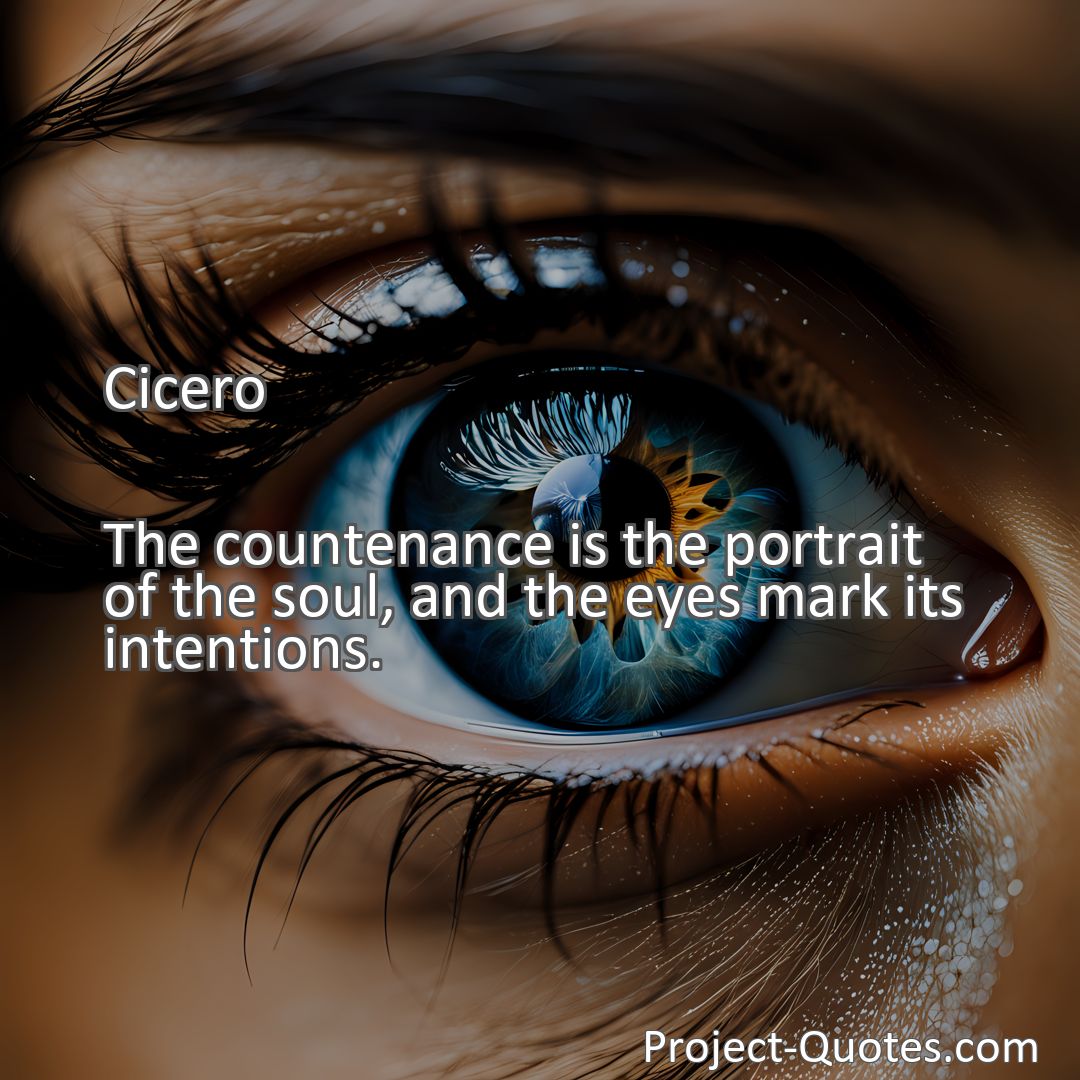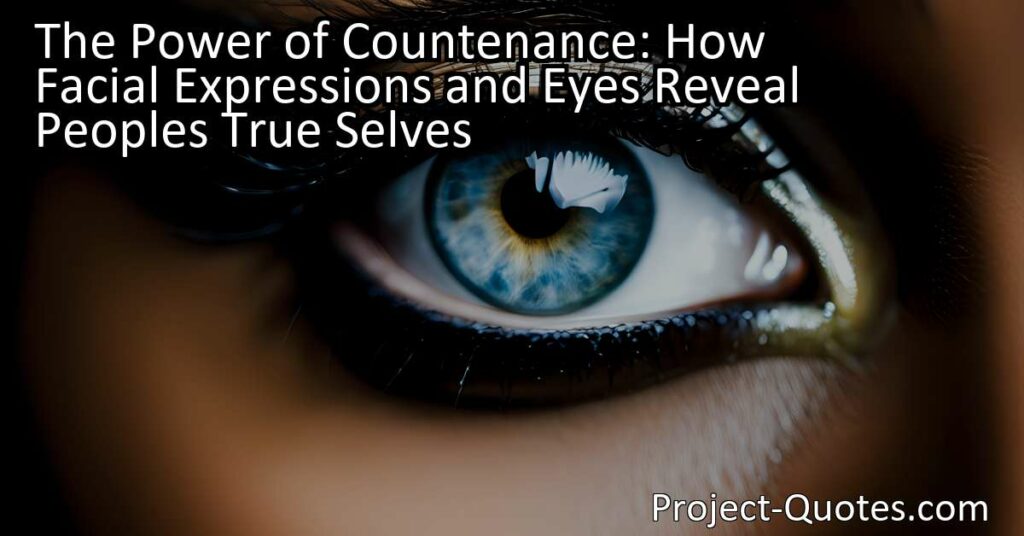The countenance is the portrait of the soul, and the eyes mark its intentions.
Cicero
The Power of Countenance: How Facial Expressions and Eyes Reveal People’s True SelvesOur faces and eyes can reveal so much about who we truly are. They serve as a window into our innermost thoughts, emotions, and intentions. Although people may wear different masks in different situations, our countenance can provide valuable insights into our true selves.
Table of Contents
Meaning of Quote – The countenance is the portrait of the soul, and the eyes mark its intentions.
Have you ever noticed how someone’s face can reveal so much about them? Well, the ancient Roman philosopher and statesman Cicero certainly believed in the power of a person’s countenance. In fact, he famously said, “The countenance is the portrait of the soul, and the eyes mark its intentions.” This thought-provoking quote suggests that our facial expressions and eyes can provide a window into our innermost thoughts and feelings.
When we think about a person’s countenance, we are often referring to their facial expression or the overall appearance of their face. Cicero suggests that this outward manifestation is a direct reflection of one’s soul. In other words, our souls are inherently connected to our physical appearances, and it is through our countenance that our true selves are revealed.
To fully understand Cicero’s profound statement, let’s delve deeper into the idea of the soul. In many philosophical and spiritual traditions, the soul is seen as the essence or core of a person. It encompasses their character, emotions, desires, and intentions. According to Cicero, these inner aspects of ourselves are not hidden but rather transparently displayed on our faces.
Consider how our faces change when we experience different emotions. When we are happy, our eyes sparkle, and our smiles radiate warmth. On the other hand, when we are sad, our brows furrow, our mouths droop, and our eyes may well up with tears. These physical expressions are universal and easily recognizable, allowing others to empathize with our feelings.
Furthermore, our eyes are often considered the gateway to our souls. They are the windows through which others can catch a glimpse of our true intentions. Have you ever heard the saying, “The eyes don’t lie”? Well, Cicero seems to believe in the absolute truthfulness of our eyes. While it is true that words can be deceitful, our eyes have the power to reveal the truth, even when our words contradict it.
Have you ever found yourself looking into someone’s eyes and feeling an instant connection or understanding? That’s because eyes can convey emotions that words may fail to capture. They can portray sincerity, trustworthiness, fear, excitement, or love, among countless other emotions. Our eyes express what our hearts may yearn to say but struggle to articulate.
Think about how easily we can recognize happiness in someone’s eyes. When someone is genuinely joyful, their eyes light up, and they may even sparkle or crinkle at the corners. This expression is contagious, and it can bring happiness to others who witness it. It’s no wonder that smiling with our eyes, also known as a Duchenne smile, is often considered the most genuine form of expressing joy.
On the other hand, when someone is being dishonest or hiding something, their eyes may dart around, avoid direct contact, or even appear shifty. These subtle cues can alert us to their true intentions, allowing us to proceed with caution or skepticism. It’s fascinating to think that even if someone is trying to maintain a composed countenance, their eyes might give them away.
Body language experts have long studied facial expressions and eye movements to gain insights into human behavior. They argue that microexpressions, those fleeting and involuntary facial expressions, can reveal hidden emotions that contradict the words being spoken. Just a twitch of an eye or the slight raising of an eyebrow can unveil a person’s true thoughts, no matter how hard they try to conceal them.
Beyond emotions and intentions, our countenance can also provide insights into our character. For example, a smiling and open countenance might suggest a friendly and approachable nature, while a stern and closed-off expression may signify someone who is reserved or guarded. These first impressions, based primarily on a person’s appearance, often shape our initial judgments of others.
However, it is essential to recognize that our countenance is not a static portrayal of who we are. Just as our emotions and intentions fluctuate, so too does our facial expression. People may wear different masks for different situations, adapting their countenance to fit the circumstances. This concept teaches us not to judge solely based on a single interaction or snapshot of someone’s countenance.
In conclusion, Cicero’s quote, “The countenance is the portrait of the soul, and the eyes mark its intentions,” highlights the powerful connection between our physical appearances and our inner selves. Our facial expressions and eyes serve as an open book, revealing our emotions, intentions, and character to those around us. It is through these visual cues that we gain insights into each other’s souls, fostering connection and understanding. So, the next time you meet someone, take a closer look at their countenance, for it may provide a wealth of information about who they truly are.
I hope this quote inspired image brings you hope and peace. Share it with someone who needs it today!


